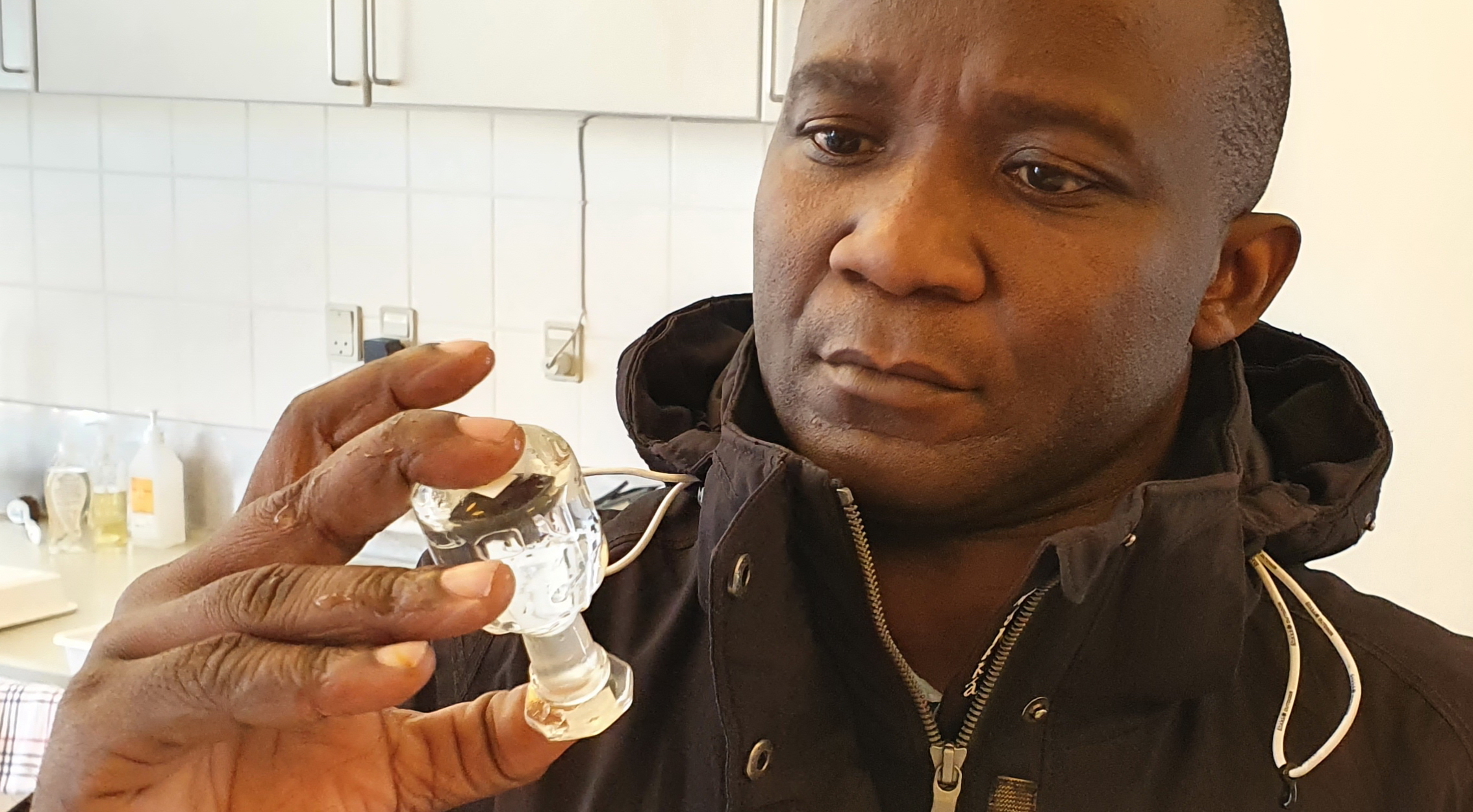Training visit by Mpeji Ndabuli from Sokoine University of Agriculture
The training visit began with a theoretical introduction to underwater photosynthesis and why submerged leaves of terrestrial plants are often limited by CO2 availability. Situations where light is limiting along with other factors were also discussed. Protocols were fine-tuned and supporting measurements of leaf gas film thickness and specific leaf area were also evaluated.
Most of the time, however, was spent on conducting measurements in the laboratory. Some of Hans’ many African rice genotypes are still growing happily in our glasshouse and we used these for training purposes; we even submerged some pots in order to measure leaf gas film thickness with time of submergence.
Unfortunately, our incubate is slightly different to the one which has been custom-built and shipped to Sokoine University of Agriculture, so we still need to spend a bit of time next time we meet in Morogoro in order to make sure that Mpeji is able to conduct measurements of underwater net photosynthesis, leaf gas film thickness and specific leaf area all by himself.
Mpeji has been hired by Sokoine University of Agriculture (Morogoro, Tanzania) as part of our Danida-funded project entitled Climate-smart African rice.

Mpeji is inserting a small rice leaf segment into the incubation vial. It is quite tricky since the leaf cuticle is superhydrophobic so the leaf has a tendency to pop out of the vial or to get stuck between the cap and the bottleneck.

Prior to starting the incubation, Mpeji is inspecting a vial with a rice leaf segment to make sure that no air bubbles are trapped in the vial. Air bubbles would ruin the measurements since a small bubble can hold more oxygen than the entire solution; thereby the rate is vastly under-estimated.
Most of the time, however, was spent on conducting measurements in the laboratory. Some of Hans’ many African rice genotypes are still growing happily in our glasshouse and we used these for training purposes; we even submerged some pots in order to measure leaf gas film thickness with time of submergence.
Unfortunately, our incubate is slightly different to the one which has been custom-built and shipped to Sokoine University of Agriculture, so we still need to spend a bit of time next time we meet in Morogoro in order to make sure that Mpeji is able to conduct measurements of underwater net photosynthesis, leaf gas film thickness and specific leaf area all by himself.
Mpeji has been hired by Sokoine University of Agriculture (Morogoro, Tanzania) as part of our Danida-funded project entitled Climate-smart African rice.

Mpeji is inserting a small rice leaf segment into the incubation vial. It is quite tricky since the leaf cuticle is superhydrophobic so the leaf has a tendency to pop out of the vial or to get stuck between the cap and the bottleneck.

Prior to starting the incubation, Mpeji is inspecting a vial with a rice leaf segment to make sure that no air bubbles are trapped in the vial. Air bubbles would ruin the measurements since a small bubble can hold more oxygen than the entire solution; thereby the rate is vastly under-estimated.

